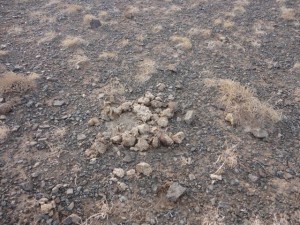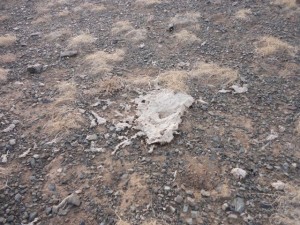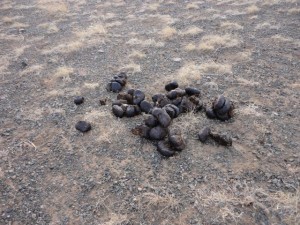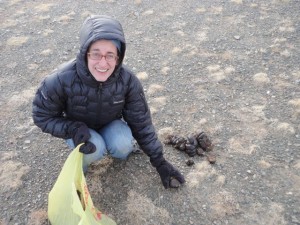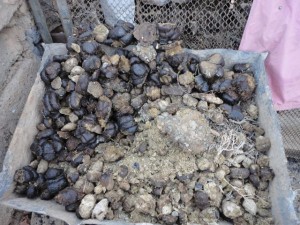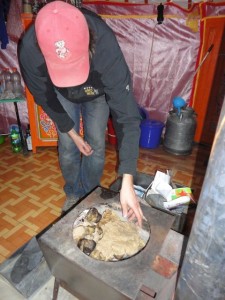Since moving back to Hanhongor I have discovered a new true love. I love collecting dung. Camel dung. Horse dung. Any plant based dung really. I love it.
Think about it. You get to walk around the beautiful Gobi desert on a treasure hunt that in the end produces “treasure” that you can cook your food with and keeps you warm. After a long day of thesis writing and teaching I find it to be the best mindless activity out there.
Since you may not have ever collected dung I thought I would give you a little guide. Keep in mind I am just starting my career as a dung collector and still have lots to learn.
1. Some dung in the Gobi desert sadly does not get collected in time and turns into dust. Sometimes bits of this are collectable if you are desperate but in general it is best left where it lies.
2. Likewise some camel dung is a bit more of a splat than a clump and is not worth picking up. In general you want to avoid dung that might be mixed with urine since it can be stinky when you burn it.
3. Now this horse dung will be absolutely lovely some day but like a fine wine it needs to age first. I have found the best way to test for doneness is to give it a sniff test (cured dung should be almost scentless) and to step on it-if there is any give it is not ready.
4. Here I am collecting some perfect horse dung. It may be smaller than camel dung but it can get hot really fast which is great when you are burning coal.
5. Once you bring it home it is best to let it cure a bit more outside until you are ready to burn it. On the top of the pile in the middle is a lovely piece of camel dung. They can be even bigger than the opening in your stove sometimes.
6. Lastly when you build your fire make sure you have a nice layer of dung before you add your coal. You are guaranteed to have a nice fire!
